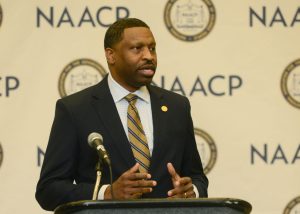An Internal Revenue Service (IRS) official’s remarks about L3C corporations have drawn a strong rebuke from those behind the legislation, which is now recognized in five states.
During the recent national conference of the American Institute of Certified Public Accountants (AICPA), Ron Schultz, senior technical advisor with the IRS’s Tax Exempt and Government Entities Division, warned against jumping on the LC3 bandwagon too early because of unresolved tax questions. "At the federal level, no one has really signed off" on whether a private foundation’s investment in L3C could qualify as a program-related investment (PRI) under section 4944(c), said Schultz. "The IRS is in the process of studying the issue to determine the tax consequences of L3Cs," he said.
Bob Lang, president of the Mary Elizabeth and Gordon B. Mannweiler Foundation in Cross River, N.Y., essentially created the legislation that establishes Low-Profit Limited Liabilities companies. He had input from Marcus Owens, a former director of the IRS’s Exempt Organizations Division and now an attorney with Caplin & Drysdale in Washington, D.C., and Arthur Wood, director of social financial services at Ashoka, in Arlington, Va.
An L3C corporation is a type of limited liability corporation (LLC) considered to be a hybrid, blending a nonprofit and for-profit. The key is that it has a social benefit as its primary mission. The concept allows foundations to make PRIs.
In a letter to Schultz, Owens countered that the IRS has issued "considerable guidance addressing the federal tax consequences" for a private foundation or other 501(c)(3) that invests in an L3C.
The IRS has not "issued a ruling specifically analyzing whether a foundation’s investment in an L3C qualifies as a PRI," Owens wrote. The IRS, he said, has "long approved foundation investments in for-profit entities — including, importantly, LLCs — as program-related investments, where the entity satisfied the PRI requirements." He cited at least five private letter rulings by the IRS, as far back as 1987 and as recently as 2005, labeling as not entirely accurate and possibly misleading, the assertion that the IRS has not yet considered the federal tax implications.
The L3C designation does not alter the legal framework for analyzing whether the foundation’s investment in the entity would qualify as a PRI, Owens said. The designation also does not relieve a foundation "from its obligation to exercise appropriate due diligence to ensure that its investment furthers the carrying out of the foundation’s exempt purpose," he wrote.
Foundations already use LLCs and corporations to accomplish charitable goals, according to Owens. Draft federal legislation creates a mandatory reporting requirement for for-profit entities that receive PRI where none currently exists, he said.
The Council on Foundations (CoF) is backing federal legislation that would complement L3C legislation already approved in six states. The bill would outline responsibilities, expectations and procedures for a potential IRS review process for PRIs and L3Cs. Legislation might relax, though not eliminate, the current need for Private Letter Rulings (PLR) — when private foundations are considering program-related investments in for-profit entities such as the L3C.
L3Cs can file in any of the five states that have passed legislation to establish the entity, and then can file as a foreign corporate entity in the state in which they are based, similar to Delaware corporations. L3C legislation has passed in Vermont, Michigan, North Dakota, Wyoming, Utah and the Crow Indian Nation in Montana. Legislation will take effect Jan. 1 in Illinois while several other states are considering similar measures. Lang said most L3Cs have filed in Vermont, with a growing number of economic development-focused projects also registering in Michigan.
"In truth, an L3C is a for-profit, so really the only aspect where any charitable official should have any question is if a foundation makes a program-related investment," said Lang, who also serves as president of L3C Advisors, an L3C Corporation he started to advise other L3Cs. He stressed that he is not paid by the small family foundation and his position is voluntary. "It’s really up to the IRS to determine whether or not, when an investment is reported, if it’s in compliance on program-related investments," Lang said.
There have been various inquiries from state charity officials, including a bevy of questions he’s tried to address from the National Association of State Charity Officials (NASCO). "Technically, there are a lot of misnomers on that, including within the IRS," Lang said, pointing to the recent comments by Schultz. "It’s a case where the right hand is not knowing what the left is doing," he said.
"These things tend to get a little inflated. People get a little panicky at the beginning," Lang said. "We want the best governance ourselves. It’s become my life’s work and I don’t want anyone messing with that either," he said.
Rich Zwetsch and Caryn Capriccioso formed the Longmont, Colo.-based interSector Partners, L3C, this past February, incorporating in Vermont and registering in Colorado, to advise entities looking into the L3C designation. "What we’re really finding is lots of people putting their toe in the water," Capriccioso said. "Our real support is helping to determine whether it’s right for them," she said. Most are entrepreneurs looking at socially responsible business models, interested in accessing foundation investments and capital.
Typically, Zwetsch said, the first step after an L3C is organized is to put a business plan together and pursue funding. Foundation PRI giving is still in its infancy as Zwetsch cited data from The Foundation Center indicating $131.5 million directed to nine recipients for 13 PRIs for the years 2008-2009. Federal legislation will go a long way toward clarifying current misunderstandings as well as the various misinterpretations by other aligned professionals who are just learning of this innovative new business structure, he said.
What nonprofits need to do is connect with people who can analyze the different alternatives, Zwetsch said.
"The rules of the game are changing, you can’t do it the way you’ve always done it. That may involve getting other people on board to think through all the various different alternatives," he said. NPT












